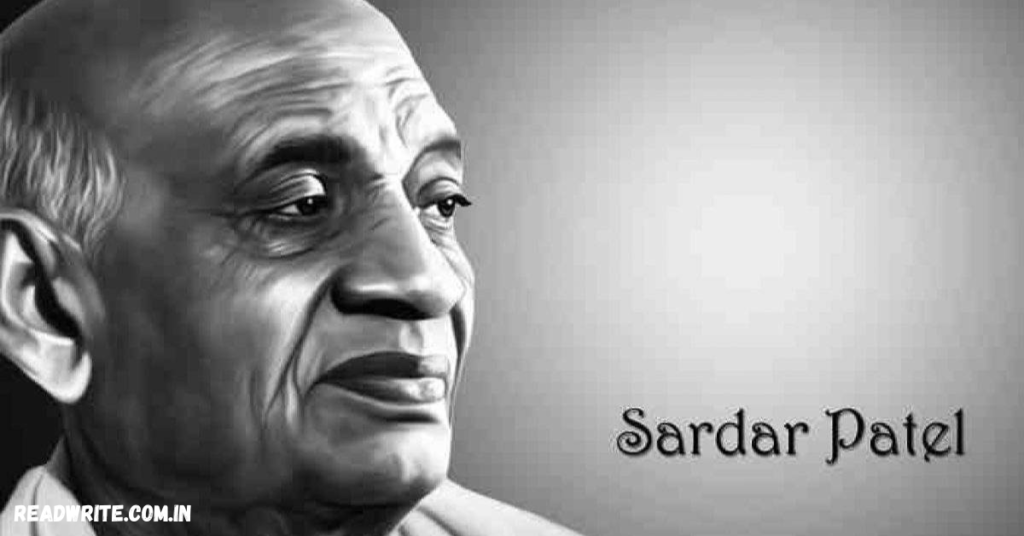India, a nation with a rich history and diverse heritage, achieved independence on August 15, 1947. The country’s transition from colonial rule to a sovereign republic required exceptional leadership. One key figure during this transformative period was Sardar Vallabhbhai Patel, the first Home Minister of India. This blog delves into the life, contributions, and legacy of Sardar Patel, a leader whose efforts were instrumental in shaping modern India.
Early Life of Sardar Vallabhbhai Patel
Sardar Vallabhbhai Patel was born on October 31, 1875, in Nadiad, a small town in Gujarat. His father, Jhaverbhai Patel, was a farmer, and his mother, Ladbai, was a deeply religious woman. Vallabhbhai’s humble beginnings instilled in him a sense of perseverance and simplicity.
Patel pursued his early education in Gujarat before moving to England to study law at the Middle Temple. Upon returning to India, he became a successful barrister in Ahmedabad. However, his legal career soon took a backseat as he dedicated himself to India’s freedom movement.
Role in India’s Freedom Struggle
Sardar Patel was deeply influenced by Mahatma Gandhi and became an active participant in the freedom movement. Some of his notable contributions include:
1. Kheda Satyagraha (1918)
During a severe famine in Gujarat, farmers in Kheda were unable to pay taxes. Patel led the Kheda Satyagraha, negotiating with the British to waive taxes, which marked his rise as a leader of the masses.
2. Bardoli Satyagraha (1928)
Patel’s leadership during the Bardoli Satyagraha earned him the title of “Sardar” (leader). This non-violent protest against unjust tax hikes was a significant victory for Indian farmers.
3. Quit India Movement (1942)
As a senior leader of the Indian National Congress, Patel played a crucial role in mobilizing people for the Quit India Movement, demanding an end to British rule.
Appointment as India’s First Home Minister
After India gained independence in 1947, Sardar Vallabhbhai Patel was appointed as the first Home Minister and Deputy Prime Minister of India. His tenure as Home Minister was marked by decisive actions that laid the foundation for a united and secure India.
The Integration of Princely States
One of Patel’s most significant achievements as Home Minister was the integration of over 560 princely states into the Indian Union. At the time of independence, these states had the option to join India, Pakistan, or remain independent. Patel, with the assistance of V.P. Menon, used diplomacy, persuasion, and, when necessary, decisive action to ensure their accession to India.
Key Highlights:
- Junagadh: Patel resolved the crisis in Junagadh, a princely state with a Muslim ruler and a Hindu majority population, through a plebiscite.
- Hyderabad: The military operation, known as “Operation Polo,” was launched to integrate Hyderabad into India after the Nizam resisted accession.
- Kashmir: Although Kashmir’s accession involved complex geopolitical dynamics, Patel’s efforts contributed to its eventual integration.
Strengthening Internal Security
As the Home Minister, Patel worked tirelessly to ensure India’s internal security. He established institutions and frameworks to manage law and order in the newly independent nation. Key initiatives included:
- Reorganization of Police Forces: Patel modernized and unified the police forces across states, setting the stage for a robust internal security apparatus.
- Civil Services: Recognizing the importance of a dedicated administrative framework, he restructured the Indian Civil Services, earning him the title “Father of All India Services.”
Vision for National Unity
Sardar Patel’s vision extended beyond immediate political challenges. He emphasized the importance of:
- Cultural Integration: Patel believed in fostering unity among India’s diverse cultures and traditions.
- Economic Development: He advocated for policies that would strengthen India’s economic foundation, ensuring progress for future generations.
Legacy of Sardar Vallabhbhai Patel
Sardar Patel passed away on December 15, 1950, but his legacy continues to inspire generations of Indians. His contributions have been commemorated in various ways:
1. Statue of Unity
The Statue of Unity, located in Gujarat, is the world’s tallest statue and a tribute to Patel’s role in unifying India. Unveiled in 2018, it stands as a symbol of national pride and unity.
2. Sardar Patel National Integration Award
This award recognizes individuals and institutions for their outstanding contributions to promoting national unity and integrity.
3. Educational Institutions
Several universities, colleges, and schools across India bear Patel’s name, ensuring that his ideals remain alive in the minds of young Indians.
Lessons from Sardar Patel’s Leadership
Sardar Vallabhbhai Patel’s life offers valuable lessons in leadership, resilience, and patriotism. His ability to make tough decisions while maintaining a calm demeanor serves as a guiding principle for modern leaders.
Key Takeaways:
- Decisiveness: Patel’s firm actions during crises underscore the importance of decisive leadership.
- Unity: His efforts in integrating princely states highlight the power of collaboration and diplomacy.
- Service: Patel’s dedication to the nation exemplifies selfless service and commitment.
Conclusion
Sardar Vallabhbhai Patel, as the first Home Minister of India, played a pivotal role in shaping the nation’s political and social fabric. His unwavering commitment to unity and security laid the groundwork for a strong and prosperous India. Remembering Patel is not just an act of honoring history but a reminder of the values that continue to define India as a nation.
The life and legacy of Sardar Patel are testaments to the fact that visionary leadership can overcome even the most daunting challenges. As we reflect on his contributions, let us strive to uphold the ideals of unity, integrity, and resilience that he so passionately championed

